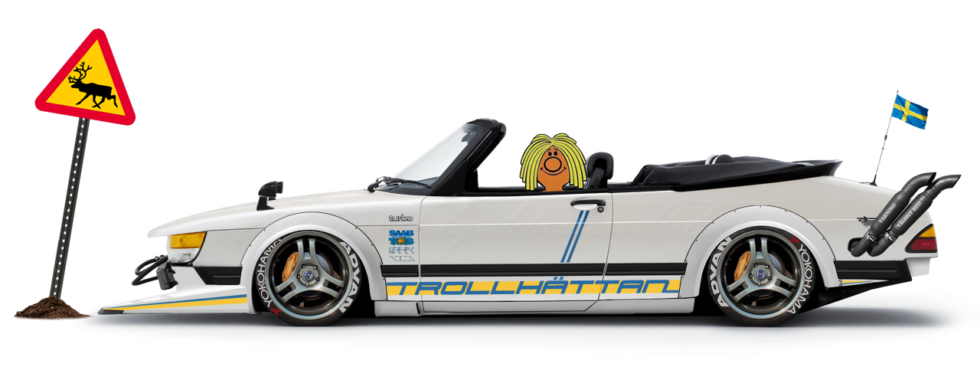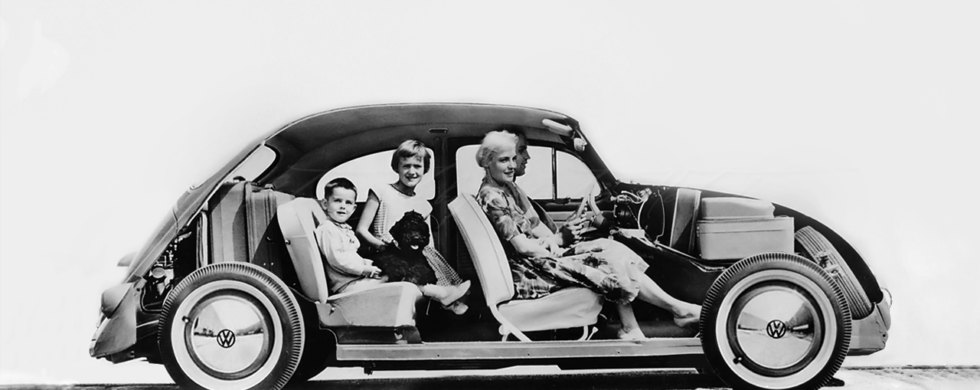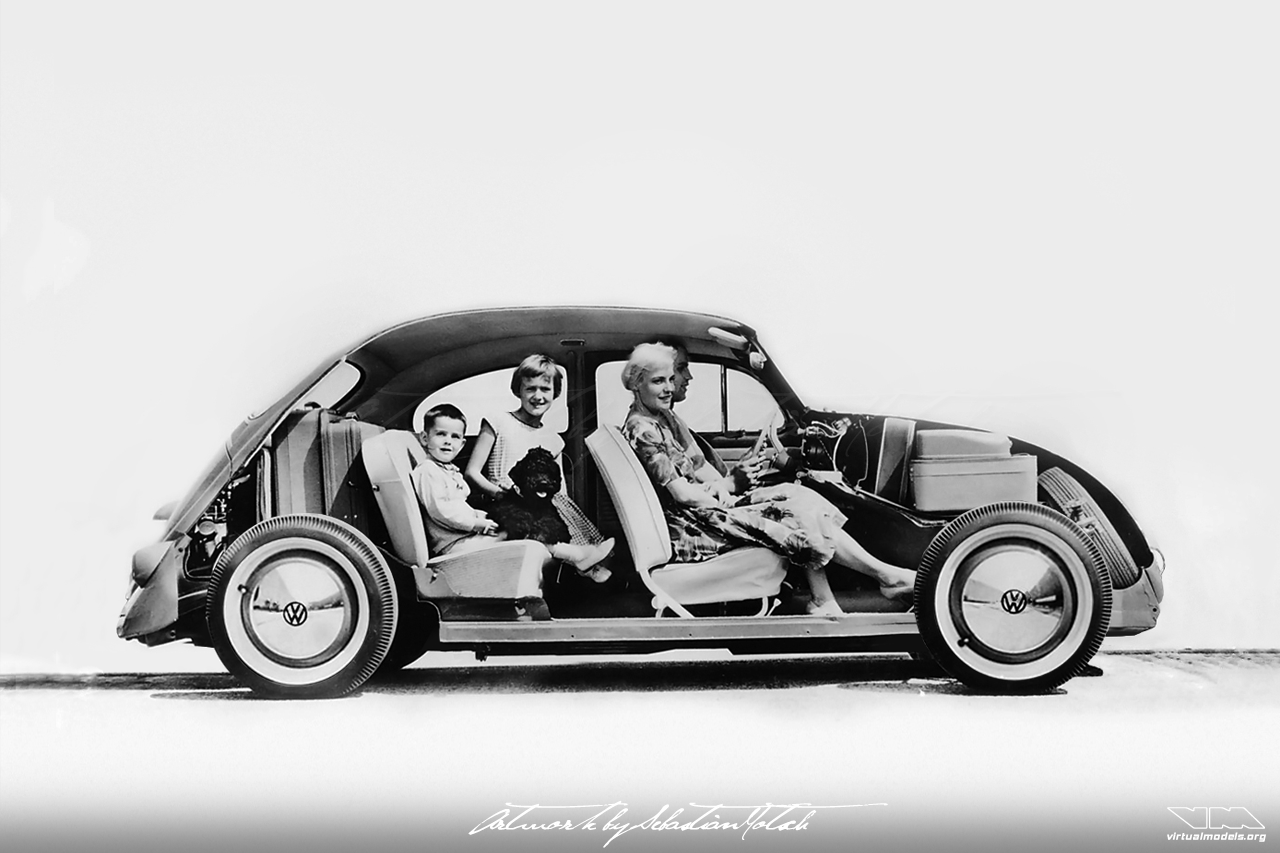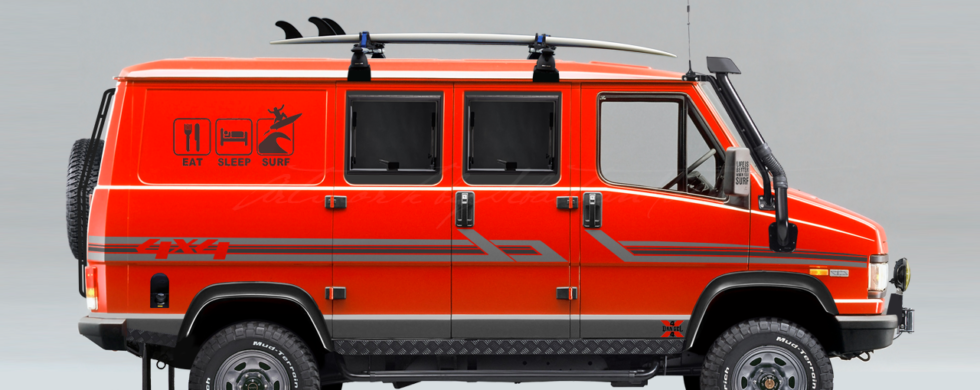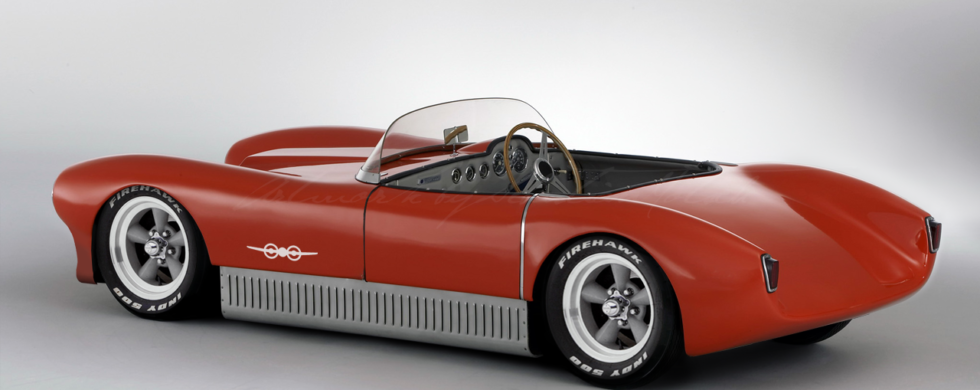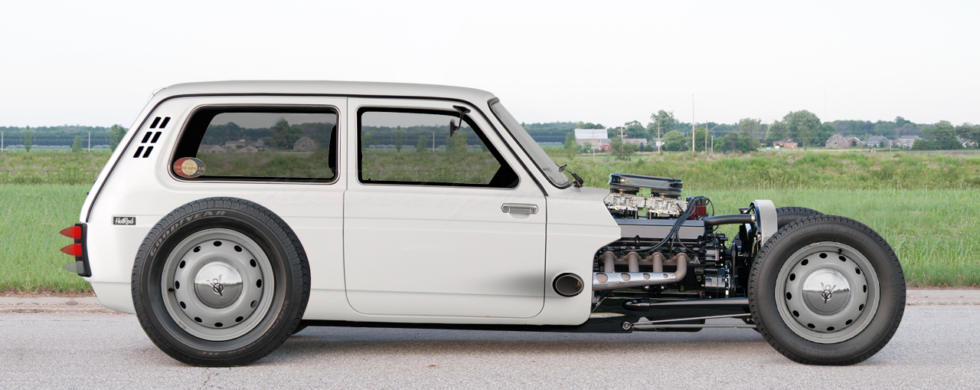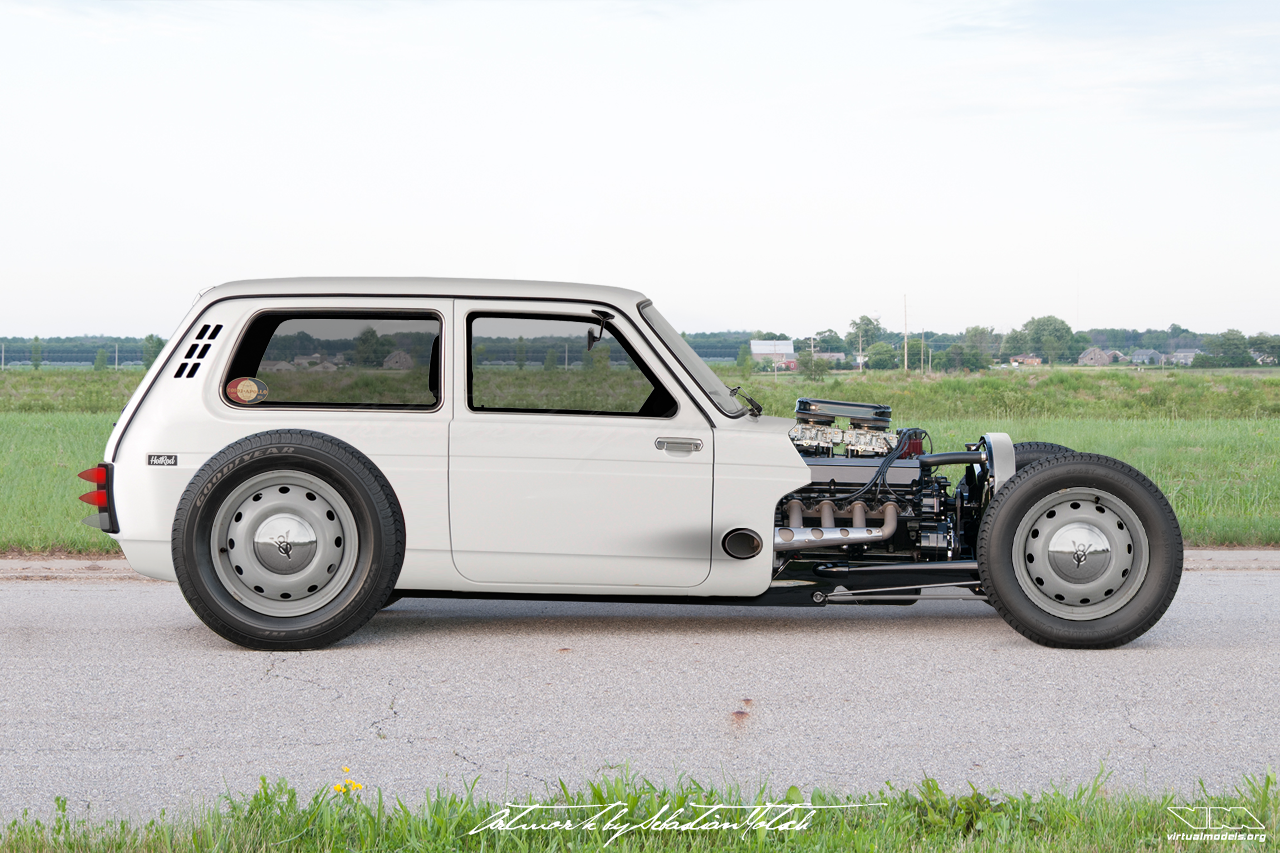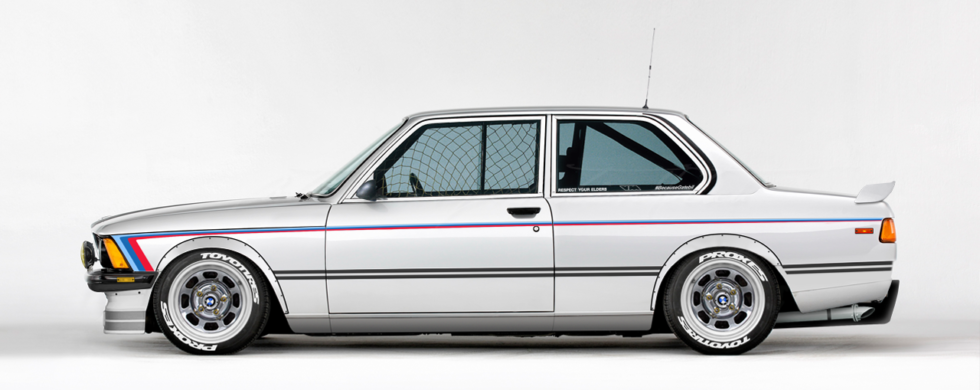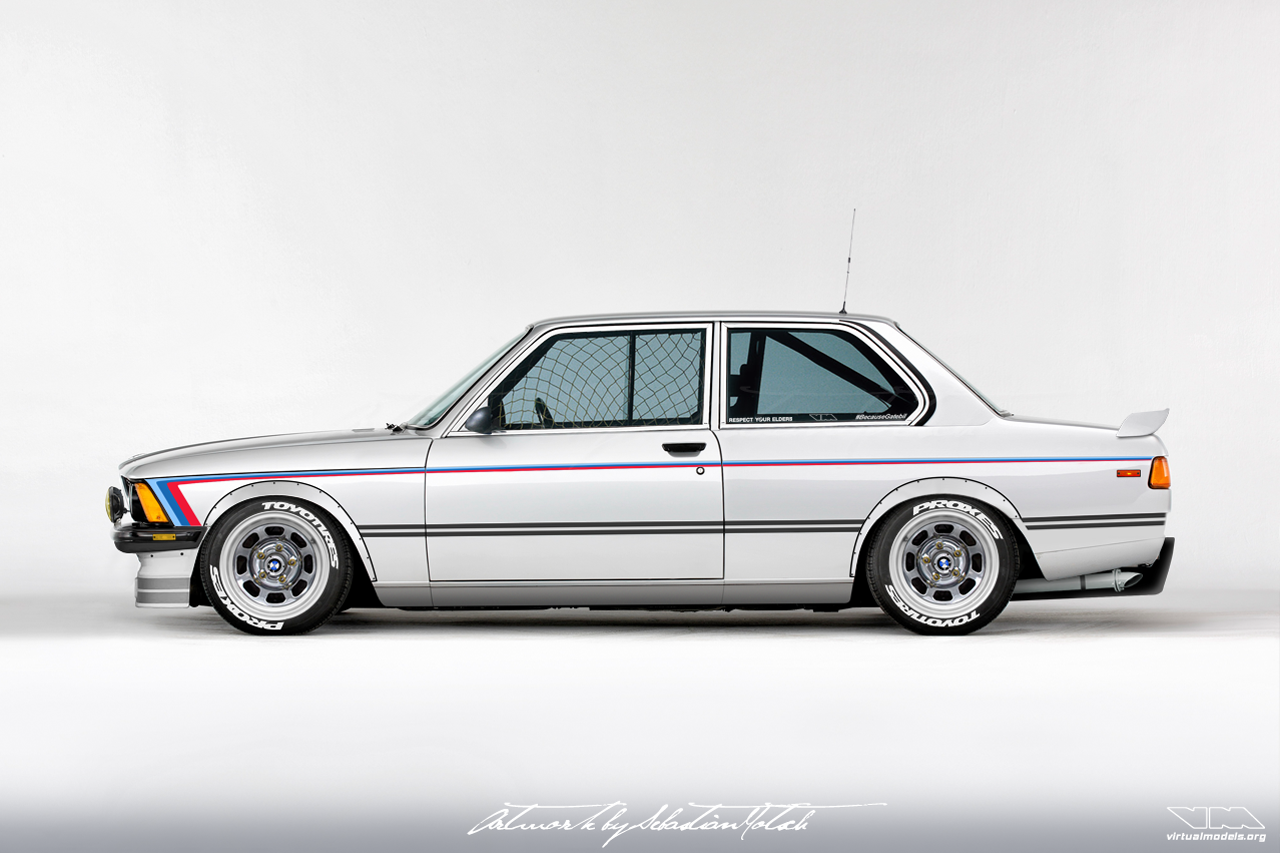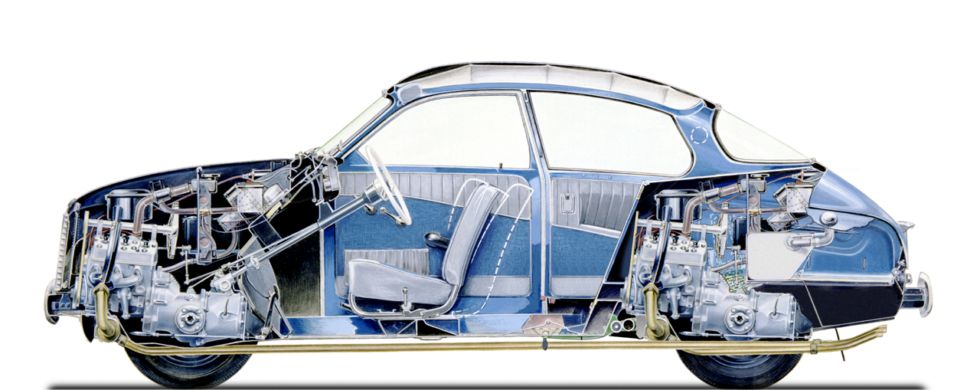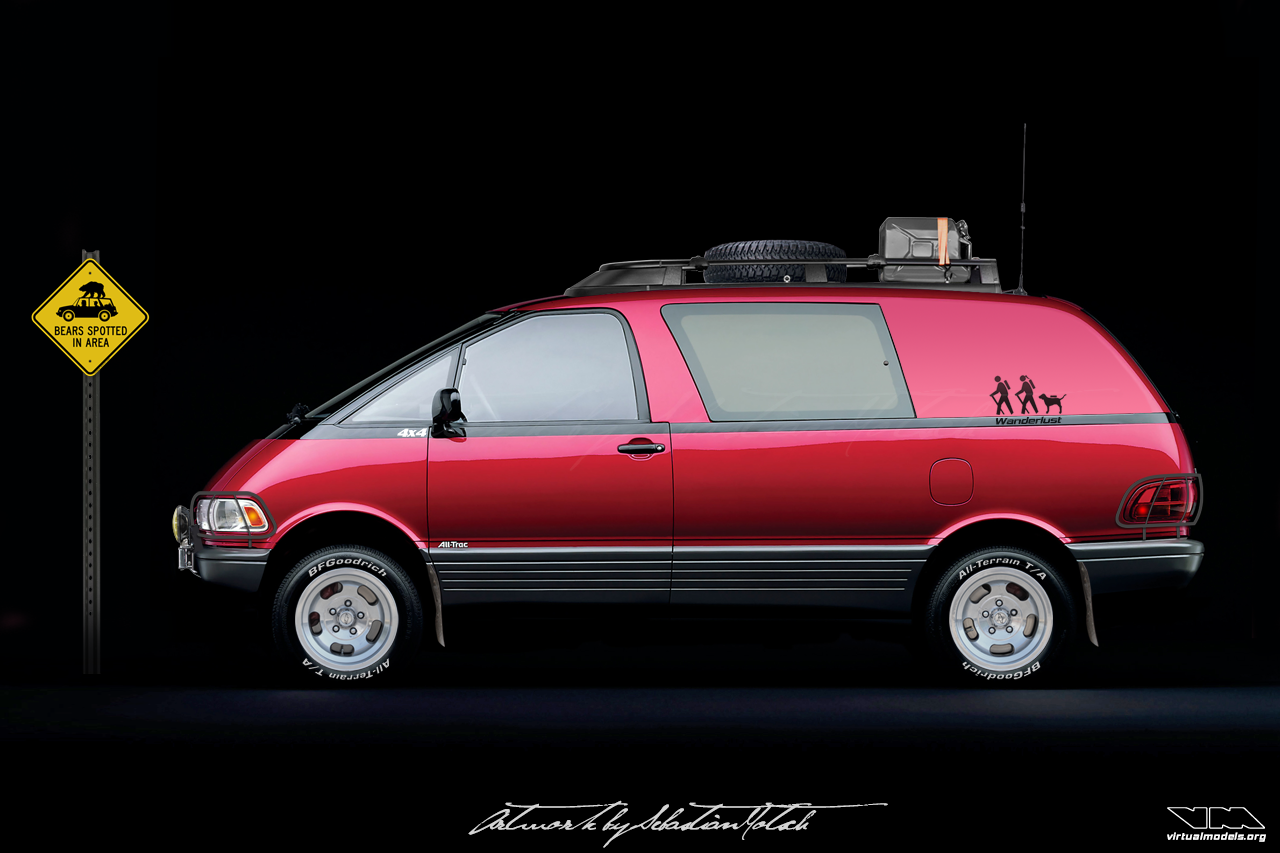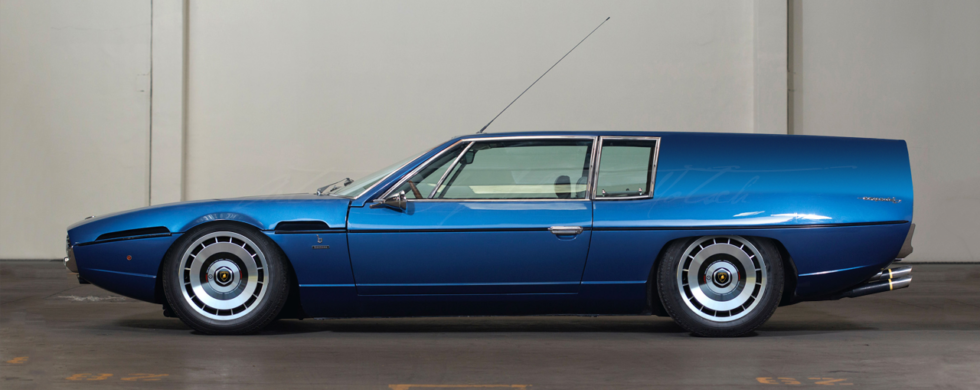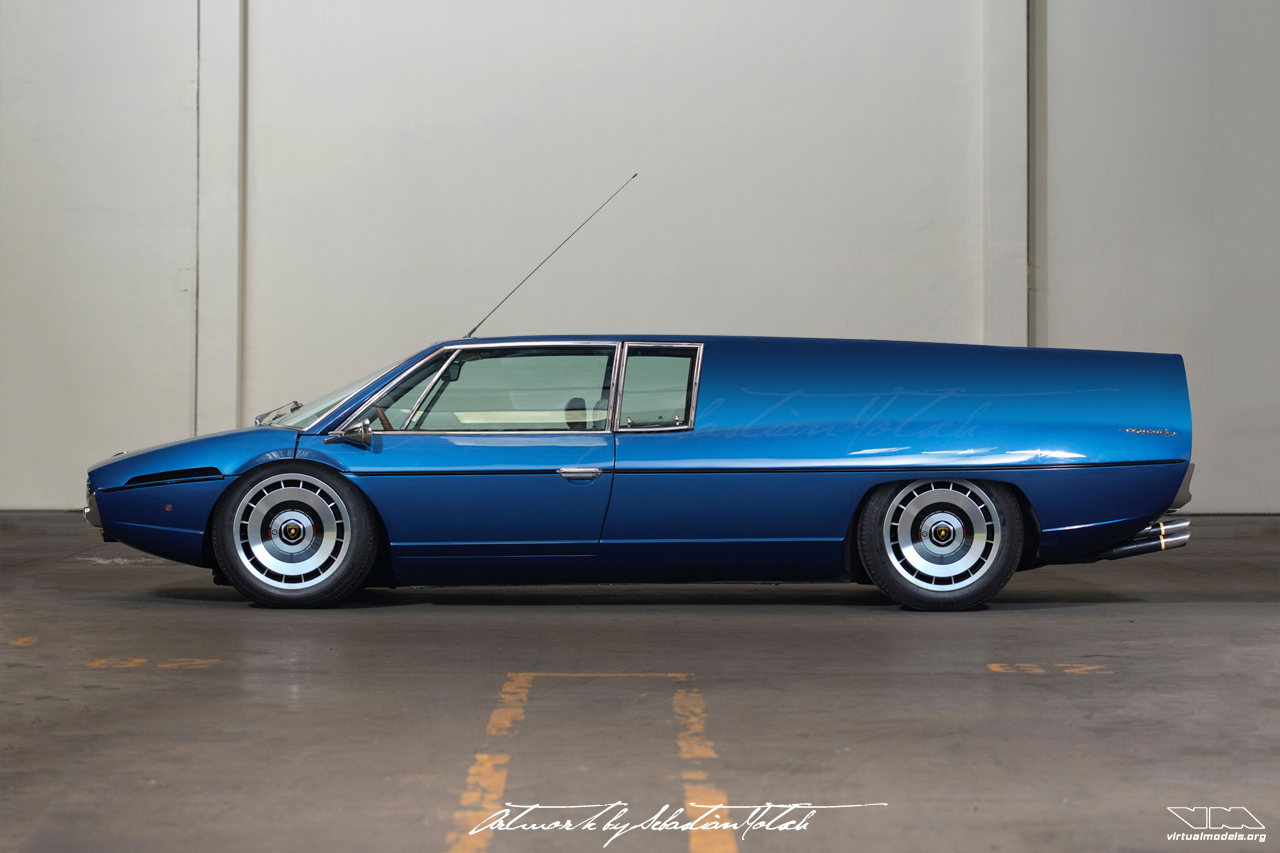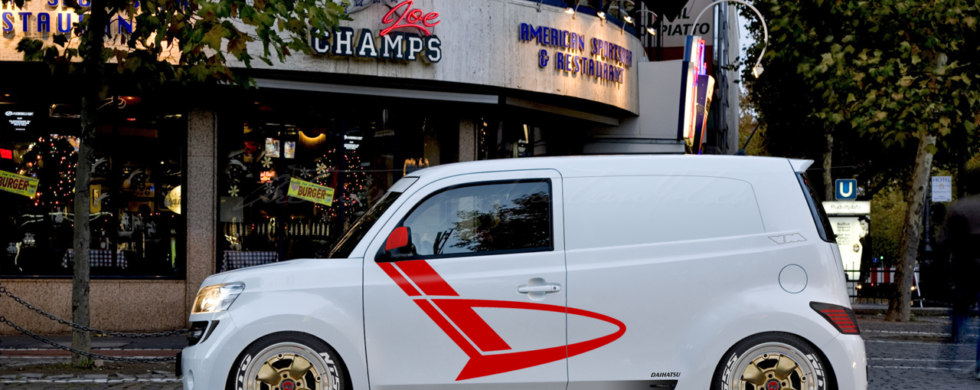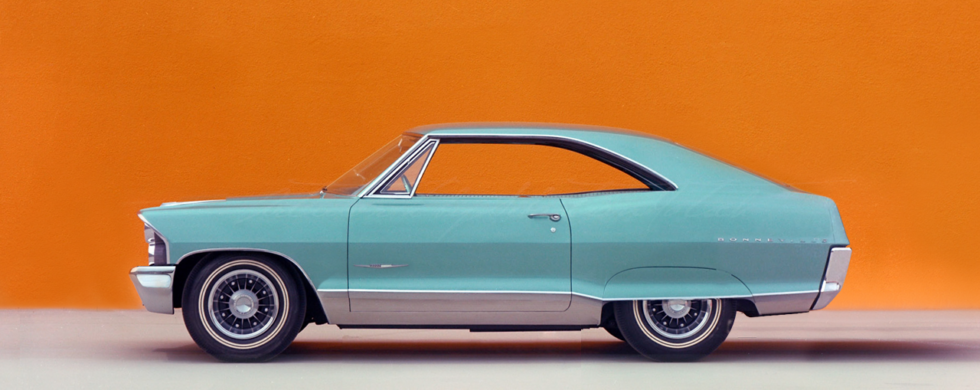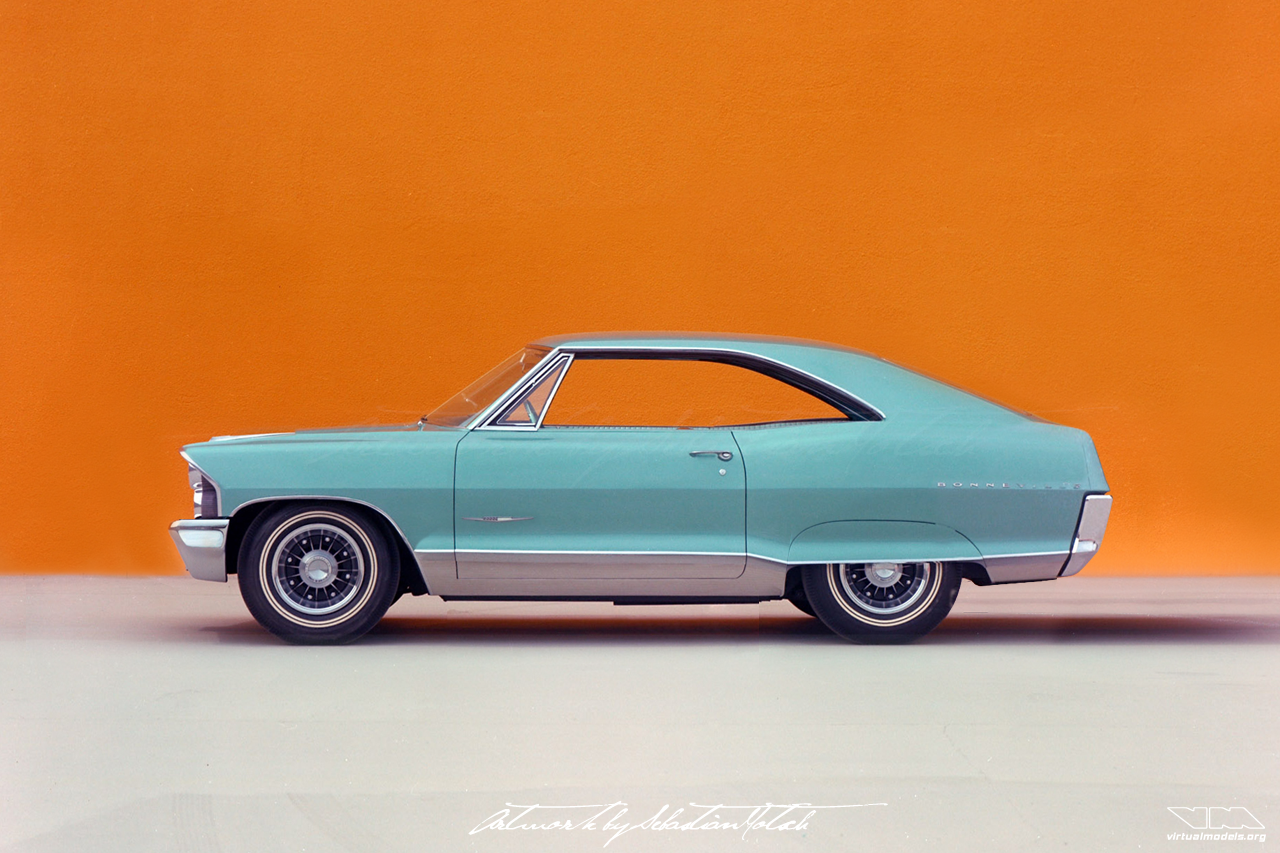28
SAAB 900 Turbo Cabriolet | Bōsōzoku Style
Avid readers of Speedhunters and Japanese Nostalgic Car are familiar with the Japanese outlaw groups called 暴走族 (Bōsōzoku) and their tastefully modified vehicles. Most common base for building such vehicles are 1980’s JDM rear wheel drive sedans and coupés. However, if the owner has identified potential for an idea, just about any car might be used as a starting point and customized in one of these particular styles.
A friend recently challenged me to create a Bōsōzoku inspired photoshop chop. Instead of resorting to the popular base vehicles, I opted to start with the least likely vehicle to be modified in this outrageous style: a safe and sensible Swedish SAAB 900 Turbo Cabriolet. SAAB could be ordered with three spoke alloys from the factory and therefore Yokohama Super Advan wheels suit perfectly. Converting this classic and throwing all the visual key elements into the mix was hilarious fun. Based on the prototype of the convertible, my interpretation of a Swedish Bōsōzoku vehicle includes many elements of Shakotan, Grachan and Bōsōzoku styles. Modified bonnet, oil cooler with externally routed oil lines, custom made sideskirts and massive front splitter, classic JDM fender mirrors, riveted overfenders and wonderfully tacky exhaust setup mounted in an unusual location. But because this is still a Swedish car, there are warnings stenciled onto the pipes. Safety first!
[Disclaimer: This picture was created without any serious thoughts. No SAAB was harmed in the process.]
22
After a long time since creating thetop-chopped Harley-Davidson Special Edition Lonestar, I wanted to create another one. The 2008 International Lonestar looks like a show truck from the factory and it didn’t need much customizing to create the slick rig you see in the picture. Lowered, larger diameter wheels with low profile tires and a a little clean-up here and there.
07
A lunchbreak challenge on the weekend? Call it what you want – this photoshop has been finished in less than 45 minutes. I took an image of a cutaway Volkswagen Käfer (aka VW Beetle), lowered the car, modified the wheels, deleted the bumpers and customized it with a top chop. Done. The dog doesn’t care driver and passengers seem to like it.
15
“Eat. Sleep. Surf.”
Great idea, but before embarking on an adventure and just doing what the sticker says, you have to build a go-anywhere vehicle that will take you even to the most remote of beaches. Let’s suppose your funds are limited and you have to make do with whatever base vehicle you find in your area. If it happens to be a FIAT Ducato Mk1 or Peugeot J5 with Dangel 4×4, you’re a lucky chap. Provided the rust has not eliminated most of the metal, it is a fairly good base to start with. Build a lift-kit, add overfenders, source some nice wheels and appropriate BF Goodrich rubber, build a camper interior that suits your needs, load up the surfboard and drive to the beach. Should you have forgotten to stop at the supermarket, it’s just surfing and sleeping for you and you’ll have to ask fellow campers for something to eat.
P.S.: The trim-line stickers are losely based on the original stickers of the Ducato 4×4.
09
I have always loved the shape of the SAAB Sonett I roadster, but similar to the BMW 507 I never liked the stance and choice of wheels. Diameter too large, tires too skinny and a stance that would suit a 4×4 – not my cup of tea on a roadster intended to be driven hard. Fixing these three problems is exceptionally rewarding on many cars from the 60’s and 70’s, because the designs are often adorable. Apply this recipe to a first generation SAAB Sonett, add a set of American Racing Torq Thrust wheels and tires with white lettering on the sidewalls. Voilà, you have a roadster that it still tiny and nimble, but looks like it packs a lot more punch.
06
When the Lada Niva (aka VAZ 21213) was launched in 1976, the iron curtain was not even half way through its existence. It would take another 13 years until the Berlin Wall came down in 1989, triggering the demise of the iron curtain. Now in 2018, 29 years later, this particular vehicle is still in production. Apart from using your new Niva (aka Taiga, aka 4×4) in the woods for hunting or similar activities it was intended to be great at, you could convert it to a hotrod. Yes, a hotrod. Find an old frame, throw all the good old performance parts at it along with a nice V8 engine and enjoy the balmy new car smell inhale cheap plastic fumes in your brand new, top-chopped cabin. I sincerely hope that someone builds this, or sends me pictures if such a beautiful thing contraption already exists. Just imagine rocking up in this hot rod at your local cars and coffee. Every other vehicle present would be invisible instantly.
Click here to see the original picture.
05
A rainy sunday with cold wind gustst at the end of a super dry summer. No reason to leave the house and plenty of time to photoshop something. After fiddling around with a couple of projects that never quite get finished, I found a picture of a BMW E21 323i and immediately started modifying it. The most obvious choice would have been a BMW V8 engine swap, but because I wanted a USDM style theme on the vehicle, it made more sense to pretend that it is converted to a GM LS1 V8. The NASCAR inspired steel wheels give the car a more or less period-correct look and the overfenders add a more modern touch. The stance is a compromise between aggressive fitment and driveability – not too low, to remain functional. I removed the trim on the sides and the rear bumper and replaced them with two black stripes. The Alpina front spoiler, the rear wing and the diffusor create an aerodynamic package that has yet to be tested in a wind tunnel. This BMW E21 could be a daily driver with ample power and excellent gas mileage. Now, who wouldn’t want to have one?
29
Todays lunchbreak challenge: something nobody in his right mind would attemopt to do for real. A SAAB 96 with twin engines, similar to the famous Citroën 2CV Sahara. All done and finished in 45 minutes, but I still need to add the shift linkage and the throttle cable. It’s impossible to add these details in the given timeframe.
15
Vanlife doesn’t only mean living and traveling in a van full-time. Most people actually just use for recreational purposes on the weekends and during their holidays. I found a picture of a 1990’s Toyota Previa All-trac and wondered if it would be possible to create a low-budget vehicle that has the ability to take you off-road to those remote hiking trails. After returning from the trail you could cook a meal, have a cold drink and sleep until the next morning. I removed the rear windows to make insulation easier and create room for storage. A body lift helps to tackle dirt tracks with more clearance and the light guards protect all four corners of the Previa. The bumpers have been shortened to improve approach and departure angles. And if you manage to get stuck, the winch will pull you out of trouble. Old school Wolfrace slot mags give it a that 1970’s vanlife touch and the roof rack provides storage for the spare tire and a couple of gas and water canisters. Add a CB-radio for those areas without cellphone reception and you’re set to go exploring. Happy hiking!
13
The Lamborghini Espada is a vehicle with a very different design approach and reflects the adventurous Seventies very well. Nonetheless it is a beautiful or even sculptural vehicle with stunning details. Believe it or not… this Furgone Veloce version happened by accident. I just wanted to lower the Espada and remodeled the rear wheel arches to fit bigger diameter wheels. It looked horrible with the stock rear window. Consequently I had to design a new window and eventually came up with the idea to convert it to a panel van. Similar to the Citroën CX Tissier shuttling newspapers, it might have been utilized to get the Gazzetta dello Sport to the chiosco quicker.
If the diligent newspaper shuttle driver needed more space, he might have ordered a furgone veloce with even more space for cargo. This would have necessitated extensive drivetrain and frame geometry modifications, of course.
26
The second generation (1980-1985) of the Cadillac Seville is a beautiful rather ugly vehicle. The chopped trunk is a weird design feature and was never really considered cool at any point in time. I remember one custom Mk2 Seville from roughly twenty years ago that was chopped, lowered and equipped with then-cool billet wheels that I liked. However, they did keep the four doors and ever since then I wondered what a two-door conversion might look like. A couple of weeks ago I found a nice picture and went straight to work. The result is more interesting than beautiful, but as I didn’t expect much I can’t be disappointed. I love the color, though.
14
I pondered this question before, when I created the short wheelbase Cadillac Fleetwood:
What if downsizing the US land yachts went a little different?
Every car enthusiasts knows that the oil crisis in the early 1970’s eventually spelled the end for the gas guzzling land yachts. Cars from Europe and Japan with much better fuel economy flooded the US market and created a situation the big three had to face. They tried frantically to build something suitable. However, most cars they came up with were great achievements horrible miniature caricatures of the bygone era of dinosaurs. You fondly remember the downsized barges and new designs like the Ford Pinto, AMC Gremlin amongst others. Especially the shrunken Cadillacs and Lincolns put a sad expression on most peoples faces. But hey… what if they had approached the whole downsizing trend with a little bit of humor and left the interiors of the cars full-size and only compromised on the outside of the body and the drivetrain? They might have come up with something like this Pontiac Bonneville 2-Door Hardtop Shorty concept.

